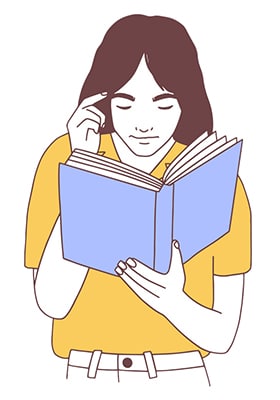What Is On The Canadian Citizenship Written Test?

The test can be taken in either English or French and is typically taken in written form (an oral option is available for those who require such accommodation). Immediately prior to the test, applicants must complete an informal 10- to 30-minute interview with a citizenship officer, to whom they must present the original documents of their paperwork and answer questions about their application, work and residence history, reasons for applying for citizenship, and so forth. After all applicants present have completed the interview, the entire group will be led into the testing room. Applicants are not allowed to bring anything into the testing room with them.
During the test, applicants have 30 minutes to answer a unique set of 20 randomly generated questions—both multiple-choice questions (which present a question followed by four possible answers, from which you must choose the best one) and true-or-false questions. To pass, applicants must answer at least 15 of the 20 questions correctly. These questions cover a broad range of important topics, including the laws and form of government of Canada, the country’s history and geography, its economic principles and social history, and its national symbols. Overall, the test is meant to evaluate the applicant’s understanding of the rights and responsibilities that they will hold as citizens of Canada.
The following lists some of the specific topics that the test might ask about within each broad content area. Applicants should be prepared to answer questions relevant to any and all of these topics.
Right’s and Responsibilities of Canadians
Canadian Values, Heritage, and Diverse Ethnic Groups
Canada’s History
- Aboriginal Peoples
- The First Europeans
- Canada’s Name
- Royal New France
- The Seventeenth Century Struggles with England
- The Province of Quebec
- The 1774 Quebec Act
- United Empire Loyalists
- The Beginnings of Canadian Democracy
- The Abolition of Slavery
- The Nineteenth Century Growth of the Economy
- The War of 1812
- The Rebellions of 1837–1838
- The 1840 Unification of Canada
- Confederation, 1864–1867
- The Dominion of Canada, 1867
- The Expansion of the Dominion, 1867–1999
- The First Prime Minister
- Westward Expansion in the Nineteenth and Twentieth Centuries
- Canadian Rail
- Canada’s Role in the First World War
- Women’s Suffrage
- Canada Between the Wars
- Canada’s Role in the Second World War
Modern Canada
- Trade and Economic Growth in the Postwar Era
- International Engagement and Foreign Relations
- Canada and Quebec Today
- Multicultural Canada
- Arts, Culture, Sports, and Science in Canada
- Canadian Discoveries and Inventions
Form of Government
- Federal State Structure
- Parliamentary Democracy
- How a Bill Becomes a Law
- Constitutional Monarchy
- Branches of Government: Sovereign and Governor-General, Senate, House of Commons, Prime Minister and Cabinet, Supreme Court, Federal Court, Provincial Courts
Elections
- Election Law
- Electoral Districts
- Voting Rights
- How Elections are Called
- Secret Ballots
- The transition of Power after an Election
- Voting Procedures During an Election Period
- Provincial, Territorial, First Nations, Municipal, and Local Elections
The Canadian Justice System
- Due Process and Democratic Principles
- Courts of Canada
- Canadian Law Enforcement Agencies
- How to Get Legal Assistance
Symbols
- The Canadian Crown
- Flags in Canada
- The Maple Leaf
- The Fleur-de-lys
- The Canadian Coat of Arms and Motto
- Parliament Buildings and Provincial Legislature Buildings
- Popular Sports
- The Beaver
- Canada’s Official Languages: English and French
- The Canadian National Anthem
- The Royal Anthem
- The Order of Canada and Other Public Honours
- The Victoria Cross
- National Public Holidays and Important Dates
Canada’s Economy
- Free Trade
- Global Economic Partners
- Canada’s Main Economic Sectors
Geography
- Relative Global Position and Size
- The Five Regions of Canada
- The Ten Provinces and the Three Territories
- The Provincial and Territorial Capitals
- Ottawa and the National Capital Region
- Population Size and Distribution
All of the questions derive from material covered in the free Discover Canada: The Rights and Responsibilities of Citizenship study guide provided in multiple formats by Citizenship and Immigration Canada as a way for applicants to prepare for the test. While other resources exist to help applicants prepare, Discover Canada is the only official preparatory guide and applicants should be aware that all questions on the test can be answered using its information; if the information provided in another source contradicts what is provided in Discover Canada, the government’s guide takes precedence.
